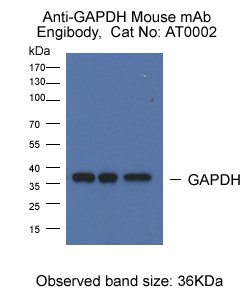Western Blot Troubleshooting
1. No signal
2. High background
3. Non specific bands
4. Incorrect band size
5. White bands on black/grey blot
6. ‘Smear’
1. Troubleshooting: NO SIGNAL
Sample preparation
• Untested species? Positive control. Check alignment.
• Not enough antigen in the sample or loaded onto the gel.
Transfer to the membrane
• Poor transfer to membrane.
• Excessive washing.
Blocking
• Too much blocking. Optimize blocking agent, concentration and time
• Cross-reaction blocking agent / antibody.
Antibody incubation and detection
• Not enough antibody.
• Incorrect secondary antibody.
• Detection kit is old - substrate inactive.
2. Troubleshooting: HIGH BACKGROUND
Transfer to the membrane
• Choice of membrane.
Blocking
• Need to block for longer.
• Optimize blocking agent, concentration.
• Cross-reaction between blocking agent and primary or secondary.
• Phospho-specific proteins: use Casein to block.
Antibody incubation and detection
• Primary antibody concentration too high.
• Incubation temperature too high.
3. Troubleshooting: NON SPECIFIC BANDS
Sample preparation
• Cell lines can accumulate differences in their protein expression profiles.
• Protein has multiple modified forms, altering mobility.
• Target protein is in fragments – degradation by proteases or cleaved.
• Splice variants / isoforms or possibly proteins from the same family.
• Multimers (dimers) of protein (reduce and denature).
• Bands may be non-specific. Run a no primary control
Blocking
• Insufficient blocking. Optimizing concentration, time.
Antibody incubation and detection
• Primary or secondary antibody concentration too high.
• Antibody has not been purified.
4. Troubleshooting: INCORRECT BAND SIZE
Sample preparation
• Ensure sample is reduced and denatured unless stated otherwise on the datasheet.
• Check for isoforms.
• Is the sample a recombinant fragment? These will run at a different size.
5. Troubleshooting: WHITE BANDS/ BLACK BLOT
• Too much primary and/or too much secondary antibody.
6. Troubleshooting: ‘Smear’
• Overloading, Protein degradation.


